Abstract
Various strains of Escherichia coli (but not strain K-12) were found to grow on 3-hydroxyphenylacetate and 4-hydroxyphenylacetate. Both compounds were catabolized by the same pathway, with 3,4-dihydroxyphenylacetate as a substrate for fission of the benzene nucleus, and with pyruvate and succinate as products. All the necessay enzymes were demonstrated in cell extracts prepared from induced cells but were essentially absent from uninduced cells. Mutants unable to grow on 3- and 4-hydroxyphenylactetate were defective in particular enzymes of the pathway. The characteristics of certain mutants indicated that either uptake or hydroxylation of 3- and 4-hydroxyphenylacetate may involve a common protein component. E. coli also grew on 3,4-hydroxyphenylacetate, with induction of the enzyme necessary for its degradation but not those for the uptake-hydroxylation of 3- and 4-hydroxyphenylacetate.
Full text
PDF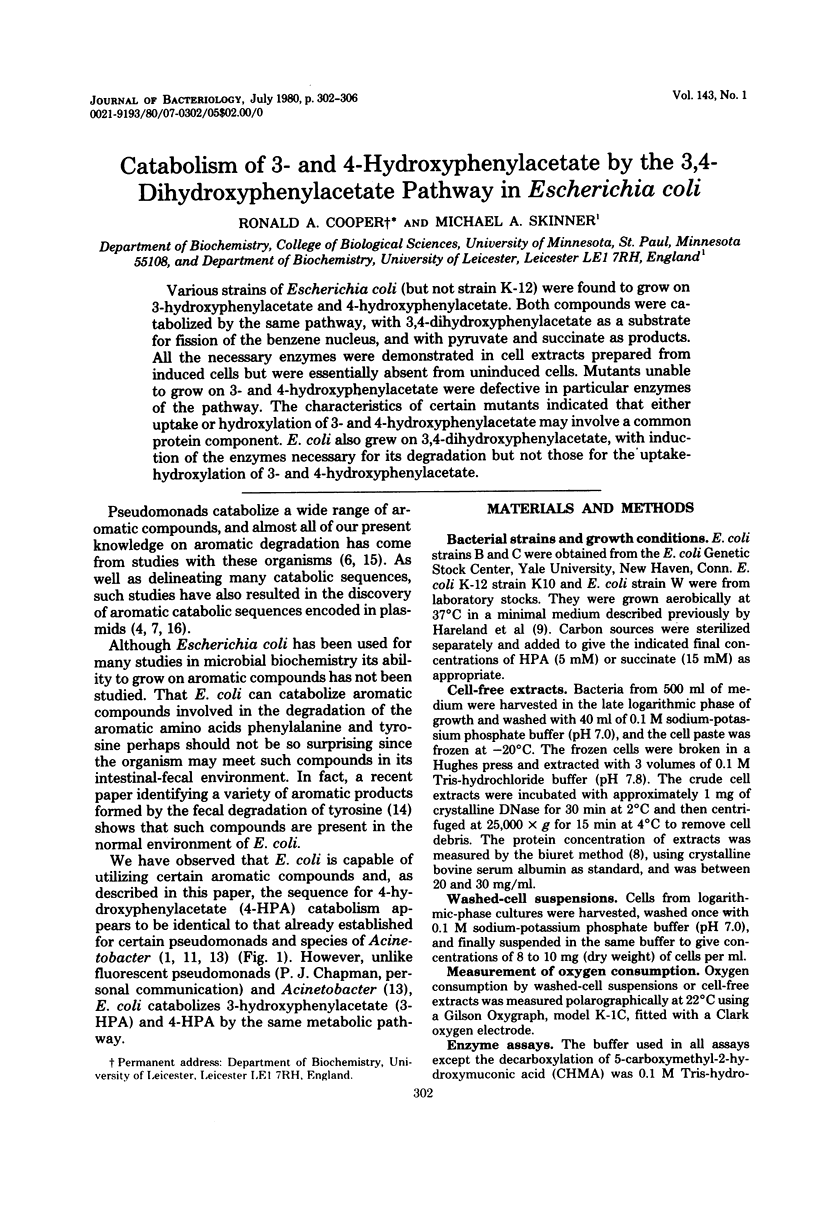
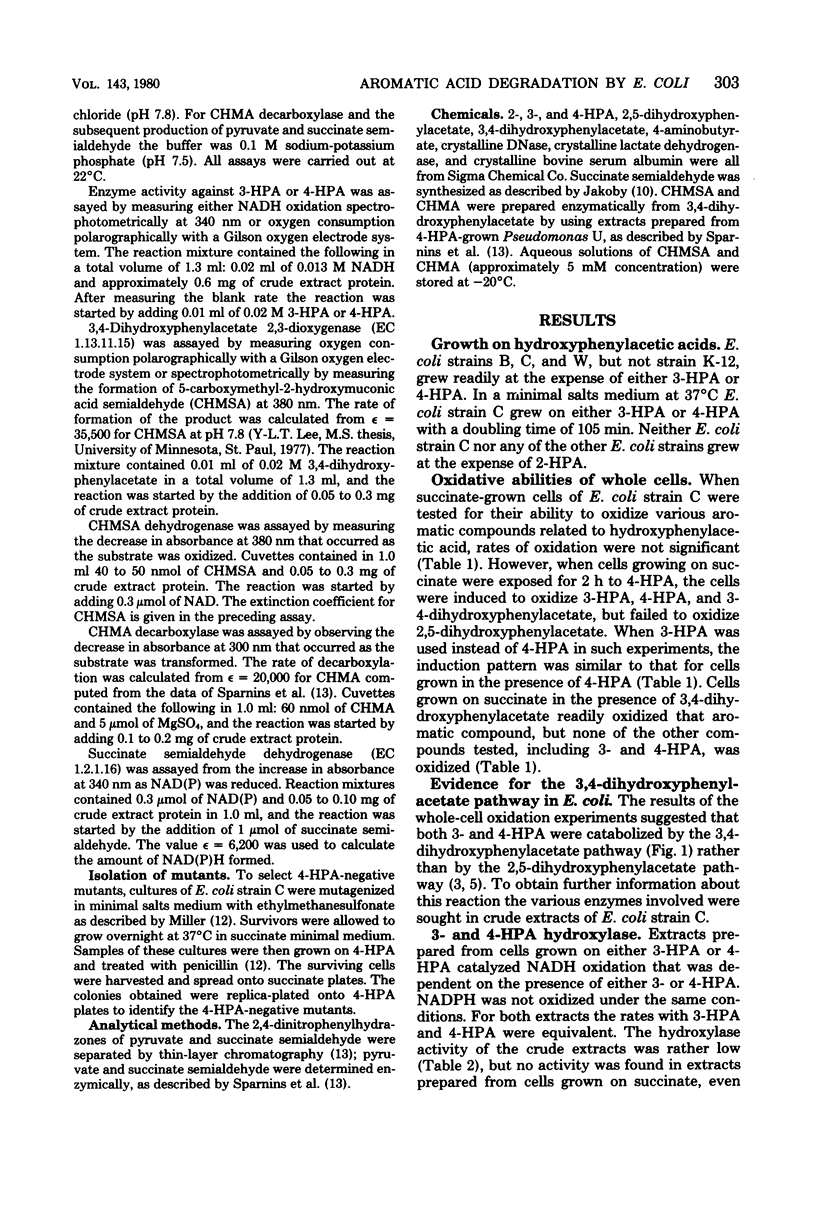
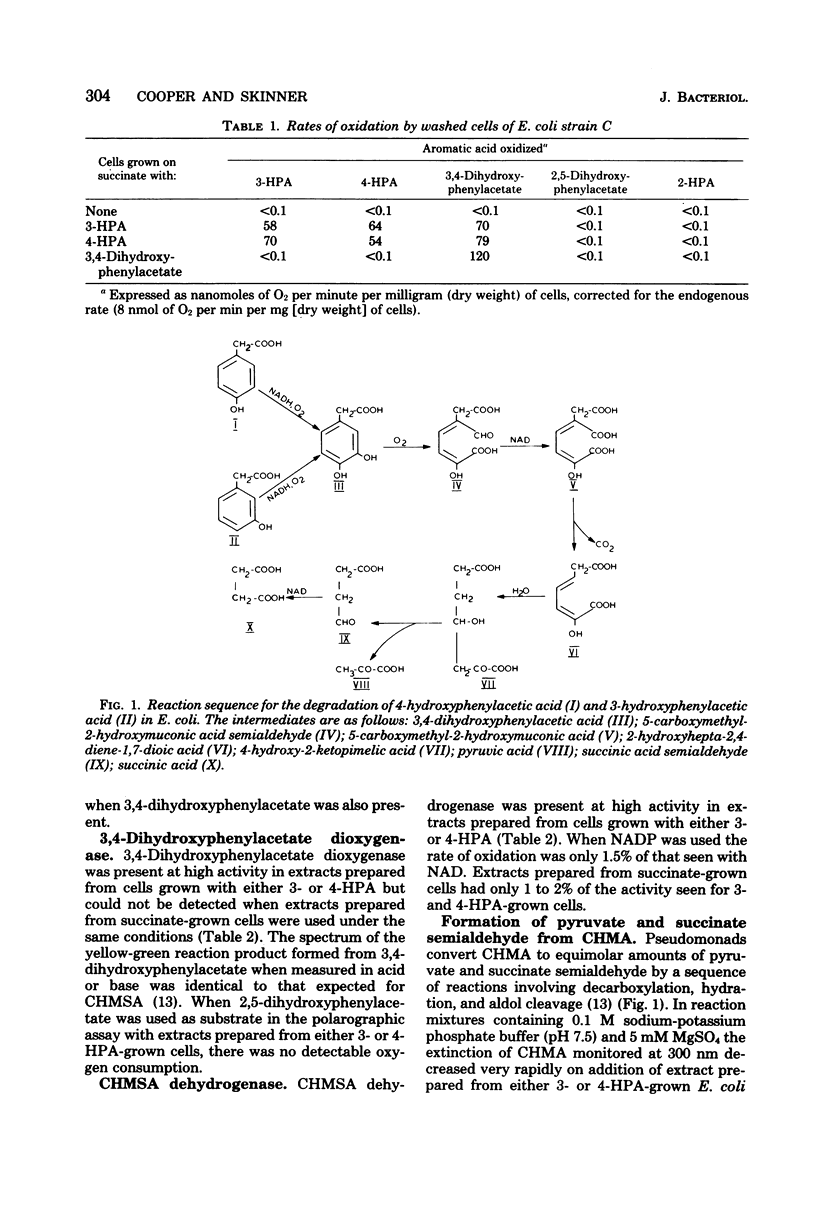
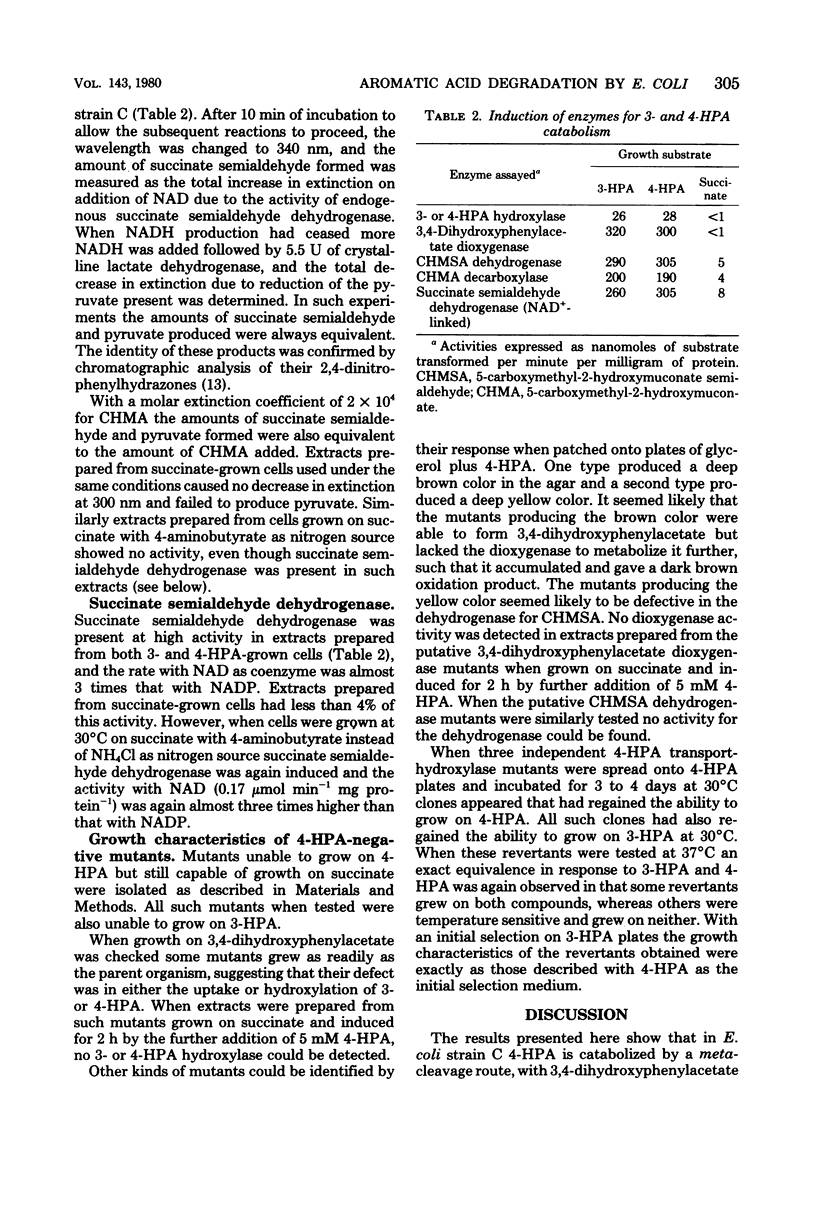
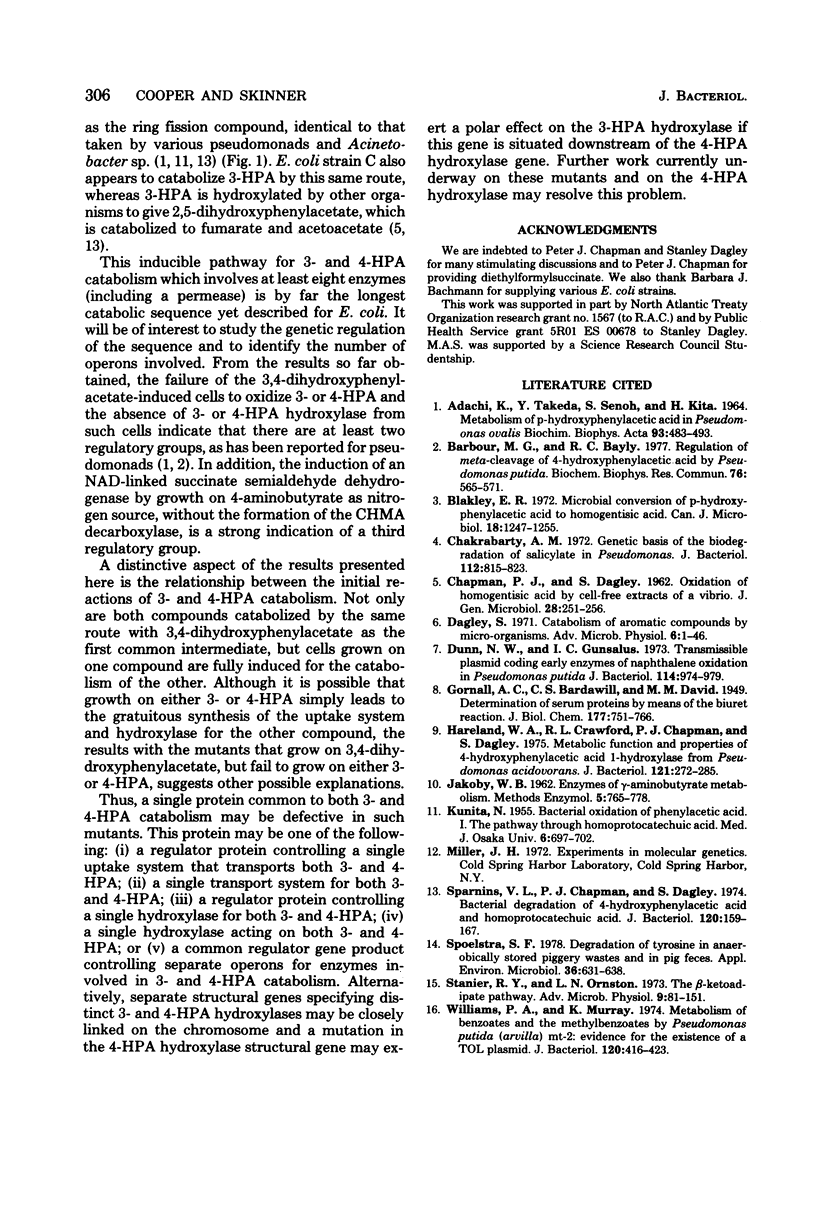
Selected References
These references are in PubMed. This may not be the complete list of references from this article.
- ADACHI K., TAKEDA Y., SENOH S., KITA H. METABOLISM OF P-HYDROXYPHENYLACETIC ACID IN PSEUDOMONAS OVALIS. Biochim Biophys Acta. 1964 Dec 9;93:483–493. doi: 10.1016/0304-4165(64)90332-0. [DOI] [PubMed] [Google Scholar]
- Barbour M. G., Bayly R. C. Regulation of the meta-cleavage of 4-hydroxyphenylacetic acid by Pseudomonas putida. Biochem Biophys Res Commun. 1976 May 23;76(2):565–571. doi: 10.1016/0006-291x(77)90761-6. [DOI] [PubMed] [Google Scholar]
- Blakley E. R. Microbial conversion of p-hydroxyphenylacetic acid to homogentisic acid. Can J Microbiol. 1972 Aug;18(8):1247–1255. doi: 10.1139/m72-193. [DOI] [PubMed] [Google Scholar]
- CHAPMAN P. J., DAGLEY S. Oxidation of homogentistic acid by cell-free extracts of a vibrio. J Gen Microbiol. 1962 Jun;28:251–256. doi: 10.1099/00221287-28-2-251. [DOI] [PubMed] [Google Scholar]
- Chakrabarty A. M. Genetic basis of the biodegradation of salicylate in Pseudomonas. J Bacteriol. 1972 Nov;112(2):815–823. doi: 10.1128/jb.112.2.815-823.1972. [DOI] [PMC free article] [PubMed] [Google Scholar]
- Dagley S. Catabolism of aromatic compounds by micro-organisms. Adv Microb Physiol. 1971;6(0):1–46. doi: 10.1016/s0065-2911(08)60066-1. [DOI] [PubMed] [Google Scholar]
- Dunn N. W., Gunsalus I. C. Transmissible plasmid coding early enzymes of naphthalene oxidation in Pseudomonas putida. J Bacteriol. 1973 Jun;114(3):974–979. doi: 10.1128/jb.114.3.974-979.1973. [DOI] [PMC free article] [PubMed] [Google Scholar]
- Hareland W. A., Crawford R. L., Chapman P. J., Dagley S. Metabolic function and properties of 4-hydroxyphenylacetic acid 1-hydroxylase from Pseudomonas acidovorans. J Bacteriol. 1975 Jan;121(1):272–285. doi: 10.1128/jb.121.1.272-285.1975. [DOI] [PMC free article] [PubMed] [Google Scholar]
- Sparnins V. L., Chapman P. J., Dagley S. Bacterial degradation of 4-hydroxyphenylacetic acid and homoprotocatechuic acid. J Bacteriol. 1974 Oct;120(1):159–167. doi: 10.1128/jb.120.1.159-167.1974. [DOI] [PMC free article] [PubMed] [Google Scholar]
- Spoelstra S. F. Degradation of tyrosine in anaerobically stored piggery wastes and in pig feces. Appl Environ Microbiol. 1978 Nov;36(5):631–638. doi: 10.1128/aem.36.5.631-638.1978. [DOI] [PMC free article] [PubMed] [Google Scholar]
- Stanier R. Y., Ornston L. N. The beta-ketoadipate pathway. Adv Microb Physiol. 1973;9(0):89–151. [PubMed] [Google Scholar]
- Williams P. A., Murray K. Metabolism of benzoate and the methylbenzoates by Pseudomonas putida (arvilla) mt-2: evidence for the existence of a TOL plasmid. J Bacteriol. 1974 Oct;120(1):416–423. doi: 10.1128/jb.120.1.416-423.1974. [DOI] [PMC free article] [PubMed] [Google Scholar]


